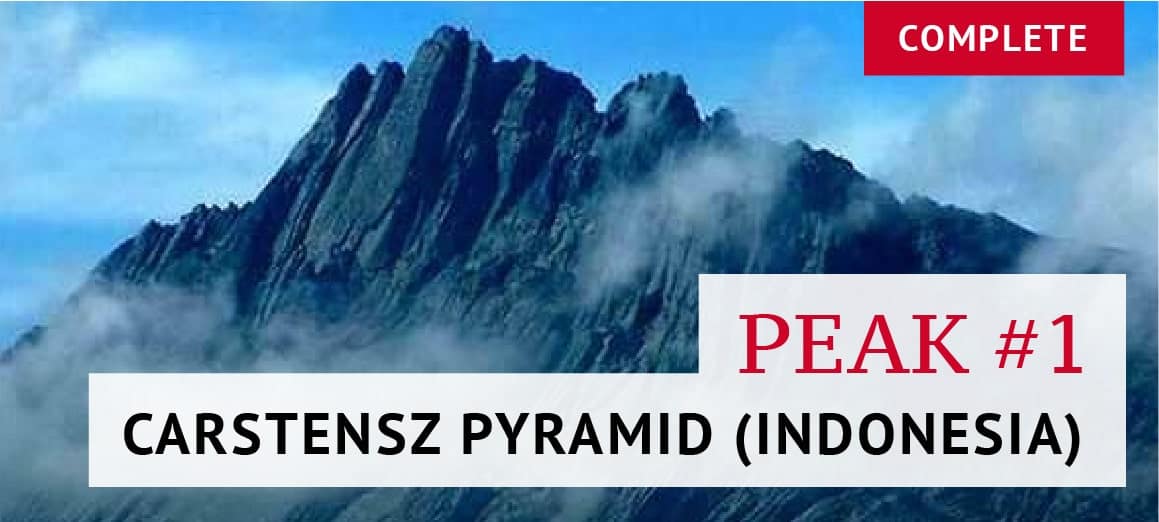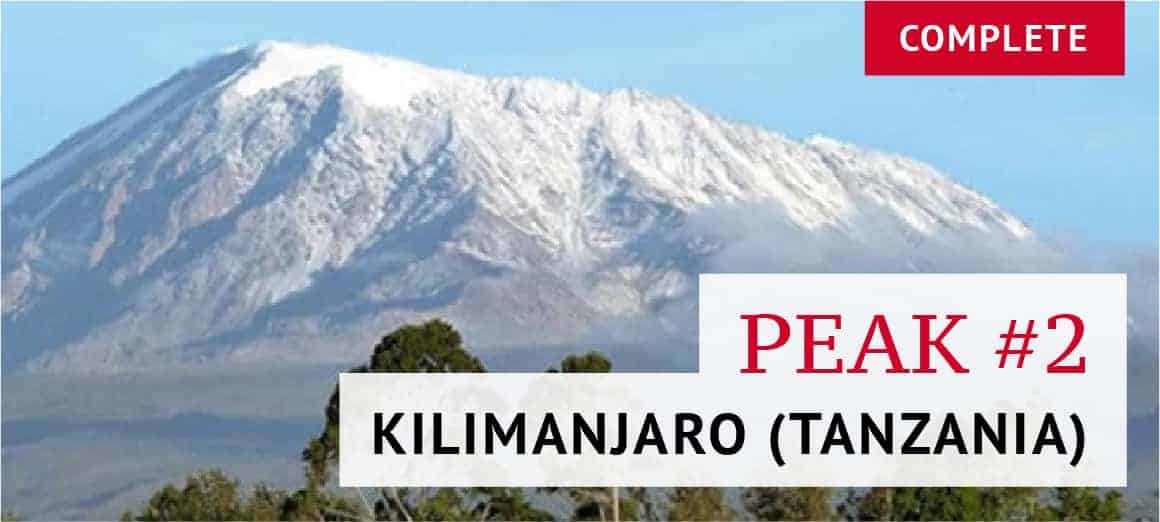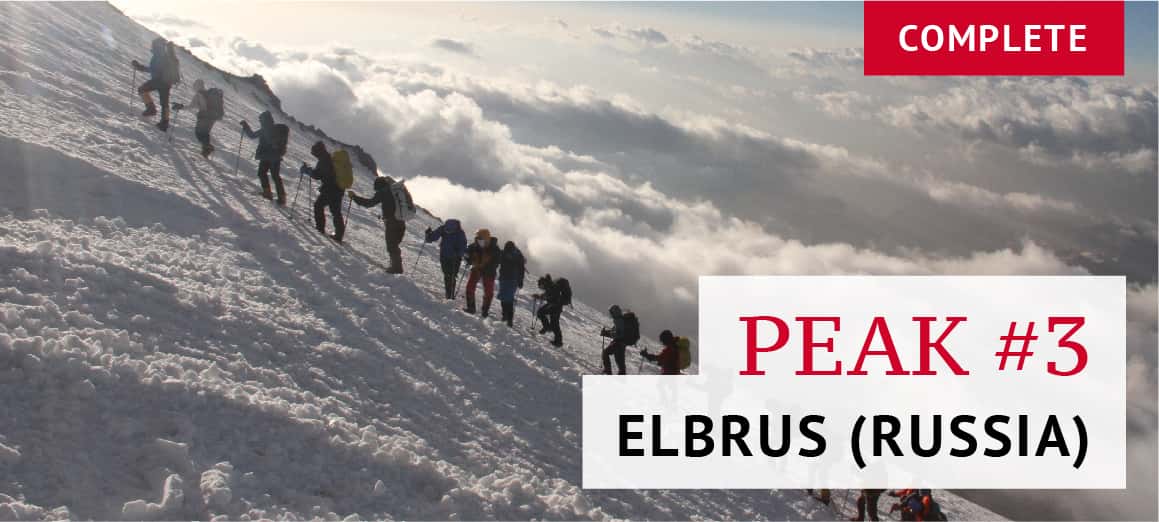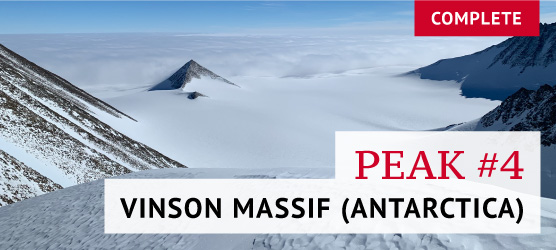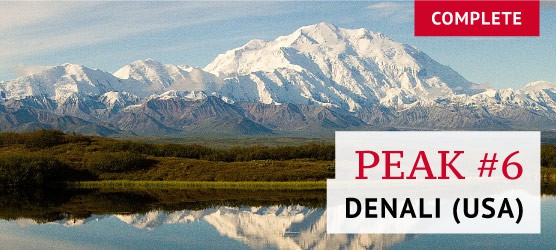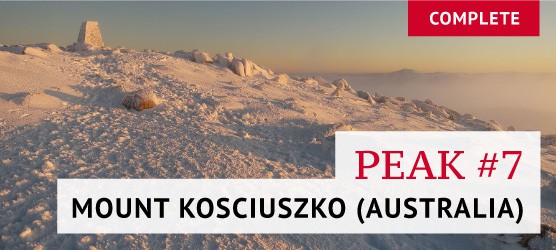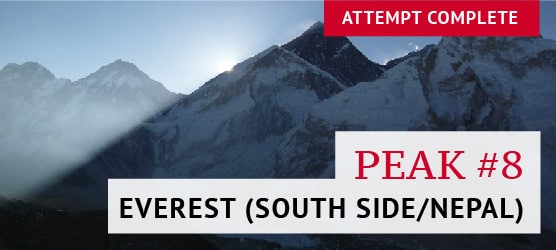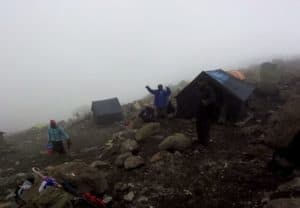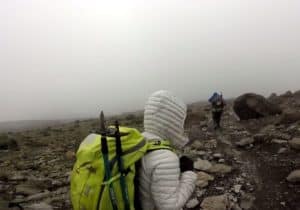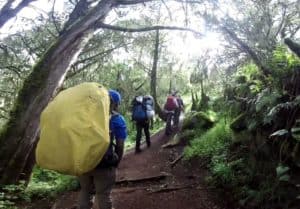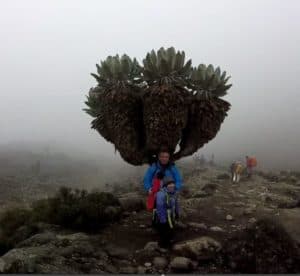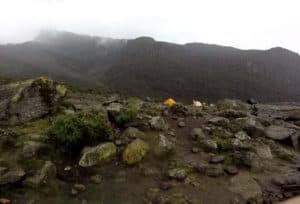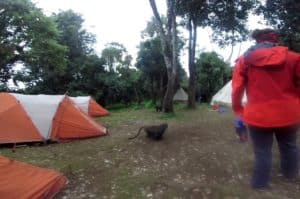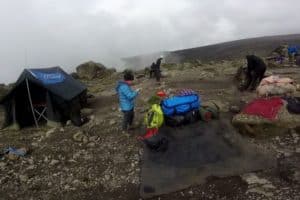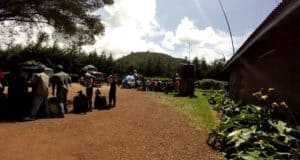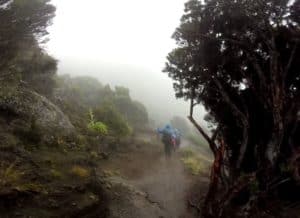Peak 2 – Africa: Kilimanjaro (Tanzania)

Summiting Mount Kilimanjaro – January 1-8, 2018
My journey to climb Mount Kilimanjaro began on January 1st, 2018. As I look back on years past, and for many of those that I have been married to Steve, I know he has always wanted to climb Kilimanjaro, followed by an African safari. Pretty much every time we planned a vacation, Kilimanjaro came up as a desired destination.
For the most part, I thought it was a ridiculous suggestion – especially the climbing part. Plus, I hated camping! I had a couple of previous experiences with it, and both times surmised I did not enjoy sleeping on the ground AT ALL!
Also, the thought of climbing mountains didn’t hold any appeal whatsoever. And then there was Peaks for Change…the Foundation was created and everything shifted. It’s amazing how a new goal and fresh motivation can change one’s perception! All of a sudden, I was going to do A LOT of climbing and A LOT of camping on the ground! The 7 Summits for Mental Health event started.
When I was preparing to climb Carstensz Pyramid in October 2017, Steve had started organizing the Kilimanjaro climb. I was happy to let him do most of the arranging, as I was focused on the details of the current climb ahead of me.
On January 1st, 2018, we embarked on a lifelong dream of Steve’s and a new mission and goal for his wife – moi. We were about to attempt something substantial together! Our New Year’s resolution was to climb a volcanic mountain in Africa, not high on everyone’s list of ‘must does’. Off we went.
When we arrived, two guides from the local touring company met us at the hotel, gave us a brief overview of the schedule of the climb and then explained their services and also their tipping policies. Tipping is a very big issue in Kilimanjaro as they can make a huge impact on how much the guides/cooks and porters earn overall in a trek -they do not take them for granted!
Mount Kilimanjaro is the tallest free-standing mountain in the world, and the tallest peak of Africa, but it is also a national park in Tanzania. Therefore, it attracts over twenty thousand people annually.
It is a busy, quite ‘touristy’ place. Anyone in the travel industry can set you up to travel to the mountain and climb it. The campsites along the route are littered with various outfitters and local guides – all local. Anyone climbing Kilimanjaro must use the service of a local guide. I say local, but I learned that the companies are actually owned by foreigners – go figure. Our guides were from Ultimate-Kilimanjaro, a US based company. We had a guide, an assistant guide and when they both led us to the bus waiting outside the hotel, 10 other people were sitting in it – they were our porters, a dedicated cook and a ‘service boy’. Sandals Resorts would have called him a ‘butler’! LOL.
Since it was January 1st and the majority of passengers were hung over from the previous night’s festivities, we were told we would stop for a short breakfast along the way. It was a 3-hour bus ride to the park entrance – we had chosen to hike Kilimanjaro via the Lemosho route. They graciously invited us to join them – and we just tagged along, because we didn’t want to wait in a hot bus. Their breakfast was a beer and ‘barbecue’. Whoa! Quite the way to start 2018! Steve sampled their ‘breakfast’ and was not sure what part of the cow he was eating! I called it the ‘stomach’ – Steve stopped eating. When I inquired what part of the cow they were actually consuming, our guide confirmed my suspicions. “It’s the inner part of the cow, the stomach”. He continued, “I know white people don’t eat that part of the cow, but for us, we eat the whole cow”. I simply smiled. Steve changed color as the “piece” he had in his mouth was like bubble gun which he later tossed!
My husband reminded them I was a vegetarian. We both wanted to ensure I had something to eat in the mountain, even though I had packed freeze-dried fruits and vegetables and dehydrated meals as a backup. I am happy to say, they were not needed.
The ride to the chosen entrance gate took us past lots of farmland which surprised me. Everywhere I looked there was cattle, herds of goats and sheep. Also, there were large spreads of agricultural land for as far as the eye could see. In Tanzania they grow potatoes, beans, mangos, pineapple, coffee and corn among other things like ginger.
My backpack organized and ready, we got off the bus. Our porters helped us unload and carried our bags to get weighed to ensure they met the maximum weight guidelines we were allowed to carry. As an aside, porters in Kilimanjaro are unionized – another indication of the level of sophistication of the climbing climate.
I learned from Carstensz, and packed much lighter this time. Each climb helps me prepare more efficiently for the next one.
We signed in with the park ranger, with the current date, our names, profession, nationality, age and the length of our stay in the park. We had to repeat this process every time we checked into a new campsite point as well as upon exiting the park. That detracted from it feeling like a wilderness adventure. Red tape in the mountain!
We started our day towards our first camp, Mti Mkubwa which was a hike through the rain forest in the park. The trails are beautifully maintained and yet natural. We saw white tailed monkeys and the views were amazing! This was a breathtaking part of our climb.
We climbed slowly, higher and higher … or like we learned to say in Swahili: “Pole, Pole”.
Walking slowly, and consistently, with one foot in front of the other, is the key to reaching the top I learned. On Summit day, I was pleasantly surprised when I suddenly arrived – I had reached the top!
When we entered the first camp, our tent was set-up, our two duffle bags were inside our tents, and there was a toilet tent, a kitchen tent AND an eating tent. What a difference from Carstenz!! Coleman, our ‘service boy’ who really was like a butler, informed us that as soon as we were settled, he would bring us hot water “for washing”. Is this real life!? And then asked if we could kindly go to the dining tent for some hot beverages and a snack. I kid you not – it was like being in an old English movie where you are traveling with servants. This is not your typical mountaineering expedition trip – it’s was a five star vacation!
Coleman also woke us up every morning 30 minutes before bringing hot water in two bowls to the tent ‘for washing’. And then breakfast was served in a timely fashion so that we could get on our way to continue climbing. The 30 minutes were used to get ourselves re-packed so the porters could carry our duffle bags, which had our clothes, sleeping bags, sleeping pads, etc. I’m SO glad Carstensz was my first climb, not my second. It would have been so much harder after this ‘royal’ treatment!
The second day took us from Mti Mkubwa directly to Shira 2 Camp. The third day we went to Shira 2 Camp that stands at 12,500 feet, then hiked to the Lava tower camp to 15, 190 feet. We stopped there for lunch and then descended to the Barranco camp to spend the night at 13, 044 feet. Climb high, sleep low – mountaineering motto for acclimatization! The fourth day we went from Barranco camp to Karanga camp and after a long like of up and down, up and down, we rested at 13,106 feet. On day five we left for Barafu camp, or base camp at 15,331 feet.
Basecamp is really more like a scene from one of those futuristic movies where there are no trees in the world. And on lava rock people live in makeshift homes. The terrain was slanted downwards which made for an interesting sleeping experience. Plus, it was bitterly cold.
After an early dinner, we were instructed to go to sleep and Coleman would wake us up at 11:00 pm for breakfast. Yes, I said breakfast, as we would start the summit climb at 12:00 midnight and needed sustenance. And so, it was.
Backpacks were lightened to hold just the bare minimum, which in my case was my inReach GSP tracker, iPhone for photos, my GoPro, our passports (you never leave those) and a bag with 6 flags for photos at the peak. I also had my trekking poles, a thermos full of hot ginger tea and my water bladder with about 1.5 liters of hot water, as I wanted it available as long as I could before it froze. Plus I had an extra two layers of clothing for the changes in temperature as we climbed. This was an unusual check list for the reader, but for the climber anticipating reaching the top, it was perfect!
We had been told by our guides they were only taking their water and emergency supplies like oxygen and one was not carrying a backpack at all. They encouraged us to not be shy about asking them to take ours. Steve’s was lighter than mine; he only had water and his extra layers of clothing and his GoPro. We both had a couple of snacks, as we cut down on the lunches that had been prepared for us. When Iwad picked up my backpack he said to me in a disapproving tone of voice: “This is about 7 kg with the water now.” I simply replied. “ I know.” As his client he could only say “Well, if you need help up the mountain we can carry it.” And I simply replied to his skeptical expression, which conveyed his doubt that a small woman such as myself could carry such a load to the summit, “Thank you. If I need help I will ask for it”. I didn’t ask for it. I carried my backpack up and down Kilimanjaro. Why am I proud of this? I needed to prove to myself I could do it. In other mountains, I won’t have the option. I did it unassisted. It felt good.
As we started the final journey, I looked up and saw the familiar head light dots moving up the mountain of climbers that had already started ahead of us in hopes of summiting. I made a comment about it and Iwad said, “Yes, those are the very ‘pole pole’ people.” “We will pass them.” I didn’t believe him at the time, but slowly, slowly, we passed several teams of climbers. Then more and more, ‘pole pole’, and all of a sudden, I looked up ahead and there were only a few lights moving. I looked behind me and saw a lot of lights. This fed my confidence. And I believed then that we would make it.
As we slowly passed other climbers resting, I noticed that the majority of them were not carrying their backpacks – and as I passed one set of climbers, I overheard a comment about a big ‘backpack’. Probably wrongly, I immediately thought they were talking about me. It chipped away at my confidence a little, but then I kept talking to myself – “one, two, one, two”; “I can do this” – and before I knew it, Iwad was telling us that we were almost at Stella Point. This is a point in the mountain where many climbers reach and take a photo and ‘call it a day’. However, it’s not the top. It is approximately 800 meters short of the highest peak (132 meters in altitude)– Uhuru Peak.
It never occurred to me to stop at Stella point, and I honestly did not understand why anyone would stop – and we kept going. The wind was high and the trail was thin. I started thinking we should be roped in, or have crampons on our boots or at least an ice axe with us. Godfrey points to the left and says: “There is the glacier…”, as I see Steve walk a little wobbly to the left side – the side of the Glacier. And I tell him to please walk more to the right of Iwad. I was imagining him slipping down the snow, towards the glacier, and I knew we had no ropes, nothing…. that was a difficult moment.
Then all of a sudden wenrise, we would not see the sun that morning. We started taking pictures and I still had my head light on. It felt unreal. Easy. Mixed emotions. How were we there?
After spending time at the peak, I pack up my flags and finish sending our peak location on my InReach, to record that we reached the summit.
Descending was not easy. When we had passed Stella Point I noticed many climbers were taking pictures, others sitting and exhaushed. We took a different path down – it is all downwards for many many hours. After a few minutes on this new path, I looked on my altimeter watch, I knew we were already a couple of hundred feet lower in altitude. As we were descending I looked at Steve’s face – it seemed purplish. Just then I noticed the baklava he was wearing was pulled around his neck and seemed to be chocking him. I tell him to take it off and once he does I noticed deep creases in his skin – the baklava was way too tight for his head! After a few moments he said, “That feels better”. I am so relieved, but I have to admit, I rolled my eyes in silence.
We passed a couple of people being helped with oxygen by their guides. Another individual was being carried along by two other men. Even though this climb felt ‘touristy’, it was clear that those who were ill prepared, were paying the price.
We arrived back at basecamp at about 8:45 am. Our porters cheer for us. We had done it! Coleman had four glasses of mango juice and four chairs waiting for us. We celebrated. It was very nice.
We are told to rest until 11:00am, then we will need to pack by 11:30am, at which point we will be served lunch so we can continue our descent to Mweka camp, which is about 9,000 feet lower. This is where we will spend our last night of our Kilimanjaro climb, before descending the rest of the way the following morning and exiting the park at the Mweka park gate before noon the following day.
Taking 6 days to climb and 24 hours to descend worked the front muscles of my legs – muscles I have to be honest, I had never felt so vividly! Upon reflection, I’m so glad I had Steve with me. I didn’t have to struggle with the loneliness I did during the first climb. We did this one together.
Was the climb challenging? It was a physical challenge rather than technical. Did I find it hard? Not really – it was only hard work, but very rewarding.
During our descent to Mweka, I noticed metal contraptions lying and scattered along the side of the trail. They were stretchers, with two front heavy-duty tires, with super tire shocks. I first noticed a couple of them, then a few feet further down, I noticed many. They were the stretchers for injured climbers and porters. We never saw them on the way up, because the way down Kilimanjaro is by a very different route.
The stats are startling. It is reported that approximately 1,000 people yearly get evacuated from Kilimanjaro. Approximately 10 deaths are reported for the same time frame, but it is believed that numbers are at least 3 to 4 times higher.
I believe it. I understand the lure of climbing a mountain and I have experienced the drunken, happy feeling one feels when you reach the Summit. It truly is intoxicating! But, I also understand the hard work it takes to train, the safety issues that need to be respected and the commitment required to persevere. Kilimanjaro is a huge tourist attraction and where there are enormous amounts of people, with some ill prepared for the climb, there is bound to be accidents.
When we arrived at Mweka camp, I was exhausted. I had been awake and moving for about 16 hours. We had climbed to 5,585 meters and then descended to about 3,100 meters. I had been worried about Steve and that had preoccupied my mind – one of the few detriments of climbing with a spouse.
After setting up our sleeping bags, we rested for a few moments until Coleman came to announce dinner. We reluctantly went to eat. Coleman tells us to please stay seated after dinner as they have a surprise planned. We did.
The surprise was a baked cake, congratulating us on the successful climb. I asked the cook HOW he did it. He baked a cake, with a vanilla ganache topping, in a one burner camping stove. He even wrote our names and had it decorated. I can’t even do that in my professional stove at home. It was amazing! Steve and I had a slice each and then we had Coleman cut a slice for the rest of the porters and team.
Well, I may expect this service next in Elbrus and Vinson…. but it’s unlikely. And I know my husband won’t be accompanying me. He is content with scratching this item off his ‘bucket list’. Next time is solo Ema.
This second climb was so much easier and gentler in many ways than the first. I wonder what twists and surprises are coming. There’s no point in wondering; I need to get back to training. Five (well 6) more to go! Stay tuned!
The final day, the entire team performed an extertaining dance -in english its called “The Tipping Dance”! You can see our two guides in blue, Godfrey on the right and Iwad on the left -both of whom did a fantastic job getting us to the top! The porters were great, the cook was absolutely fantastic. We even had a personal toilet just for the the two of us (I would suggest this option if it is available, as the “public” toilets are squat ones and just walking past those small buildings you need a strong stomach.

